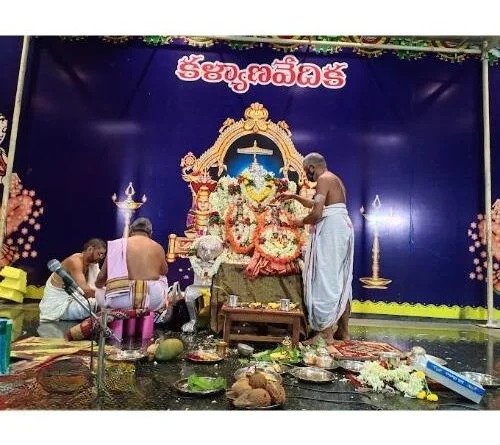Sri Veera Venkata Sathyanarayana Swamy Vari Devasthanam Annavaram,Andhra Pradesh
Sri Veera Venkata Satyanarayana Swamy Temple is a Hindu-Vaishnavite temple located in Annavaram in Kakinada district of Andhra Pradesh, India. Dedicated to Lord Satyanarayana Swamy, an incarnation of Lord Vishnu, the temple is situated on Ratnagiri Hill. It is one of the most visited religious sites in Andhra Pradesh and is recognized as one of the state’s wealthiest temples.The temple holds significant importance as a major pilgrimage centre and is regarded by many as the second most prominent in the state after the Tirumala Venkateswara Temple.
The temple attracts thousands of devotees daily, particularly for the Satyanarayana Vratham, a ritual performed for wealth, health, and prosperity. Consecrated in 1891, the temple has undergone various expansions and renovations, including significant reconstruction in the 1930s.
Legend
Annavaram is home to the sacred Ratnagiri Hill. According to the Sthala Purana (legend of the place), the renowned Meru mountain, one of the prominent mountains in Hindu mythology, performed severe penance to Lord Vishnu along with his wife Menaka. Pleased by their devotion, Vishnu blessed them with two sons, Bhadra and Ratnakara, who were born as mountains. Bhadra, after performing penance dedicated to Vishnu, was transformed into Bhadrachalam, the abode of Lord Rama. Similarly, Ratnakara’s penance was rewarded when Vishnu appeared as Sri Veera Venkata Satyanarayana Swamy on the Ratnagiri Hill, also known as Ratnachalam.
History
The temple’s origins are linked to a vision experienced by a devout Brahmin named Eeranki Prakasa Rao, who lived in the village of Annavaram, located near Pithapuram. During the period of Raja Inuganti Venkata Ramarayanim Bahadur, both Prakasa Rao and the local ruler had a simultaneous dream in which Lord Vishnu instructed them, “On the forthcoming Sravana Sukla Vidiya, under the Makha Nakshatra on a Thursday, I will manifest on the Ratnagiri Hill. You shall install my idol as per the sacred rituals and serve me.”
Following this divine revelation, Prakasa Rao and the ruler shared their visions with the villagers and prepared to visit Annavaram on Sravana Sukla Padyami of the Khara year. While searching for the deity on the hill, they discovered the idol, illuminated by sunlight beneath a Krishna Kutaja (Ankudu) tree. The villagers carefully uncovered the idol and transported it to the summit of Ratnagiri.
On August 6, 1891 (Salivahana Saka 1813), the idol was consecrated following the traditional Vishnu Panchayatana system, alongside the installation of the Sri Matripada Vibhuti Maha Vaikuntha Narayana Yantra, which had been brought from Kasi. The original temple structure was a modest shed, which was later expanded into a more elaborate temple with contributions from devotees. The temple was reconstructed in stone during 1933–34 and showcases a unique blend of iconography.
















